Porto is one of the nicest summer cities in Europe. The rich history of Portugal shows everywhere, and there’s plenty to see and experience. The promenades and terraces around the Douro River are perfect for having a good time, and the shopping possibilities are great. To top it off, the center can easily be explored on foot - in spite of the up and downhills, characteristic to the city.
Porto is situated by the cool Atlantic Ocean, where temperatures rarely reach +30°C. The city is therefore pleasant even in mid-summer - and should the weather get hot, the fine-sand beaches are awaiting just a metro ride away.
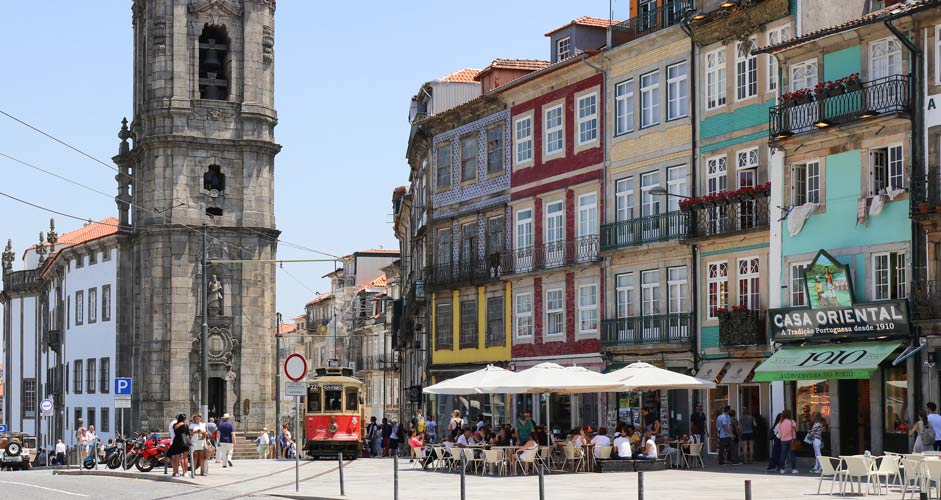
Where to stay
If you want to stay close to key attractions, look for hotels north or west of the Luís I bridge within a one-kilometer radius.
The neighborhood around the cathedral (Sé do Porto) close to the bridge and the promenade constitute the oldest part of Porto. This area with its tiny alleys and ragged buildings divides opinion sharply. While some feel that Porto is at its most original there, many would rather stay in more modern areas north of the older district. One such example is Bolhão that also contains the main shopping street Rua de Santa Catarina. As a general rule, areas south of the São Bento train station until the river belong to the oldest Porto. This area is known as Ribeira.
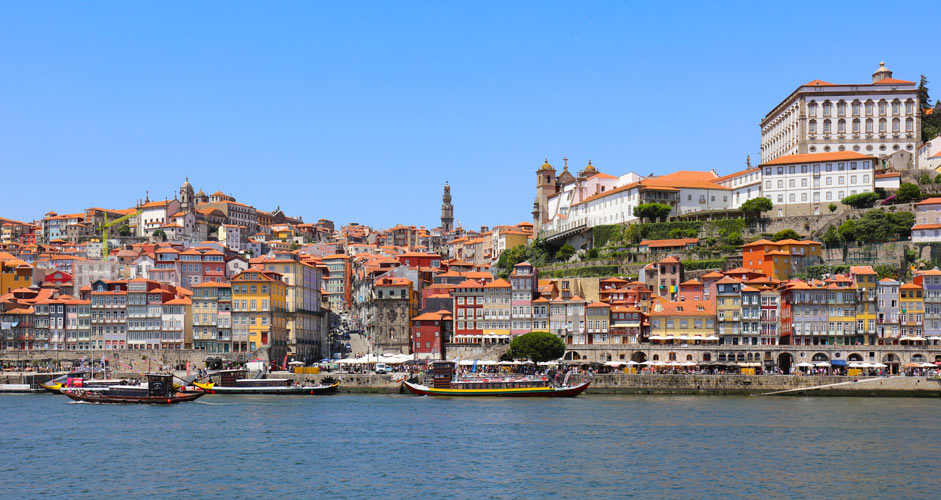
You can’t avoid up and downhills anywhere in the central areas. The largest ascent is between the riverside promenade and the cathedral.
If you want to stay at the very center of the city, you should book a hotel near the Liberdade Square (Praça da Liberdade).
Things to do in Porto
Luís I Bridge
The Dom Luís I bridge connects Vila Nova de Gaia and Porto, and it’s the only bridge that tourists usually end up using while they’re in Porto. The bridge has two levels; the lower for cars and the higher for the metro. Pedestrians can use both levels. Especially the higher level offers fantastic views to the center of Porto, the port wine cellars of Vila Nova de Gaia and the Douro River. As for catching the views, this is a must in Porto.
If you want to get even higher, try the former monastery Serra do Pilar in Vila Nova de Gaia, with a viewing point in front of it. To get there, continue straight along the metro line after the bridge, and turn backwards to the left at the next crossing.

Riverside promenade Cais da Ribeira
Cais da Ribeira is a riverside promenade on the north bank of the river Douro, west of the Luís I bridge. The colorful yet ragged buildings of the Ribeira district create a cozy atmosphere with restaurants on two levels.
In summer, the promenade is crowded with people, and topping it all off, there are youngsters running around aiming to jump to the river for a swim. Most river cruises depart from the piers of Cais da Ribeira.

Palácio da Bolsa
Palácio da Bolsa is a highly decorated palace that was built in the 19th century. Its interior took decades to build by artists of various disciplines. As per its name, it was originally built to house the Stock Exchange and the Court of First Instance. Today, the building is the home to Porto Commercial Association and a venue for various events.
You can reserve a ticket for a guided tour. You can’t move freely in the building on your own.
For more information: palaciodabolsa.com

Liberdade Square
The Liberdade Square (Praça da Liberdade) is considered the central square of the city, as most attractions are situated around it. The pompous houses of the 400-meter-long square include the city hall, bank office buildings and the InterContinental hotel that was refitted into an old palace, Palacio das Cardosas. Decorating the square, there are many monuments such as the statue of King peter IV riding a horse (shown in the picture).
Praça da Liberdade also contains other hotels, restaurants and cafes. However, it’s not really a place for having a good time. Instead, it’s a place for attractions and taking pictures.
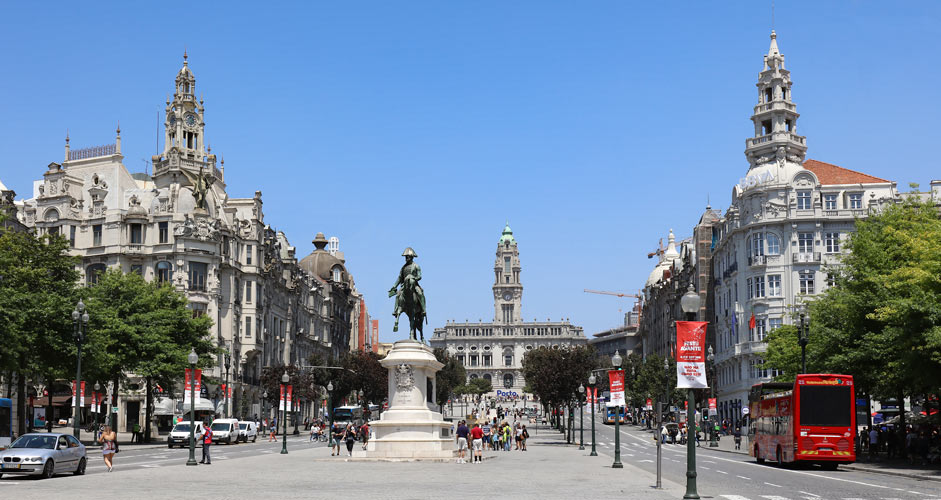
Jardins do Palácio de Cristal (Crystal Palace Gardens)
The glass-domed gymnastic arena, Palácio de Cristal, is not an attraction itself, but it’s surrounded by cozy, well-maintained gardens constituting the finest general garden area in Porto. Towards the south, there’s an old defensive structure and fantastic views to the Douro River.
Jardins do Palácio de Cristal is situated west of the very center.
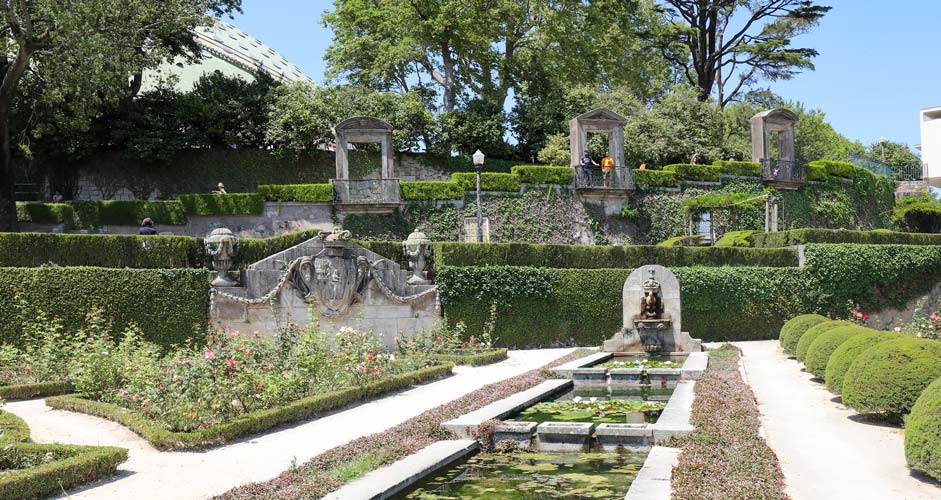
FC Porto and Estádio do Dragão
FC Porto plays its home games at Estádio do Dragão, situated right next to metro stations bearing the same name. The metro station is easy to find, as it’s the final stop of the three metro lines A, B and E. The stadium houses the FC Porto museum, and there are guided tours to the facilities of the stadium. Estádio do Dragão was completed in 2003, one year prior to the European Championship tournament in Portugal.
Alameda shopping center is situated next to the stadium.
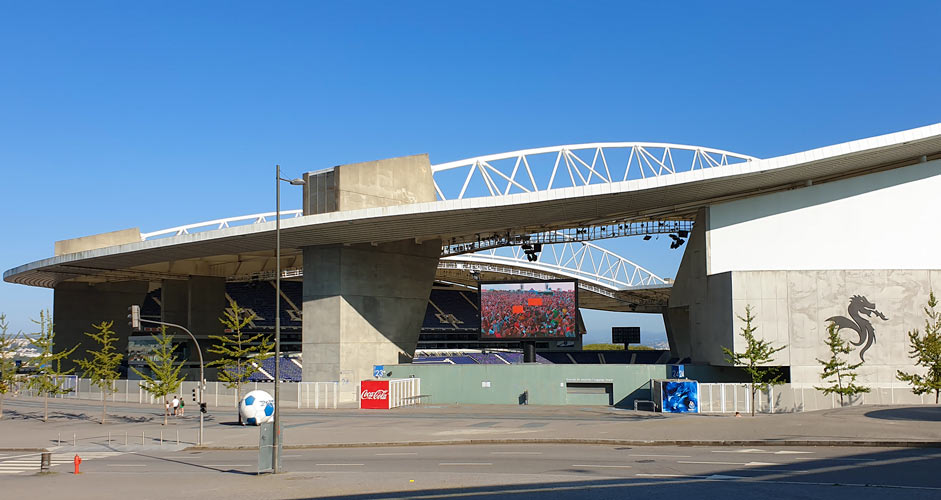
Livraria Lello
Livraria Lello is a highly decorative, over a 100-year-old book store west of the Liberdade Square. It’s been chosen as one of the most beautiful book stores in the world by Time, The Guardian and Lonely Planet.
Rarely enough, there’s an entrance fee to this bookstore, and at least during the summer, there’s almost always a queue to get in. Buying the ticket beforehand via the Internet saves you from buying it from the counter a few doors down the street, but you won’t be able to skip the line. If you buy a book while in the store, the cost of the ticket is subtracted from the price of the purchase.
For more information and tickets: livrarialello.pt
Porto Cathedral (Sé do Porto)
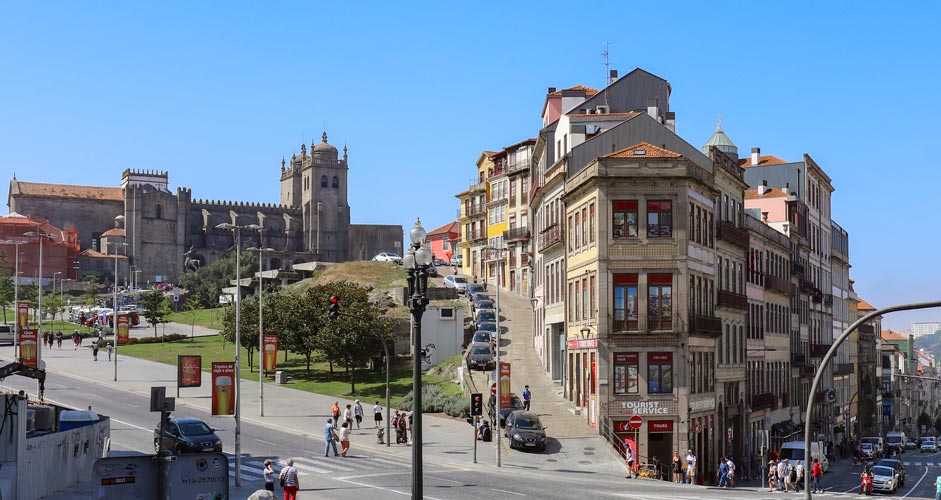
The castle-like Porto Cathedral is a part of a large building complex, which among other things, contains smaller chapels, a monastery, treasure artifacts of the church, and two towers.
The cathedral is situated right in the center of Porto, and it is one of the finest attractions of the city. While the exterior may not be very glamorous, the interior really is. In 2019, the entrance fee was 3 euros covering access to all parts, except for the Bishop’s Palace next to the cathedral. The Bishop’s Palace is a former bishop residence, mainly containing antique furniture and paintings. A separate entrance fee is collected to get into the Bishop’s palace.
Other churches
The Clérigos church (Igreja dos Clérigos) is one of the most visited churches in Porto. Its high tower is one of the landmarks of the city. For a fee, you’ll have a chance to climb up to the tower and see the view over the city. The church itself can be visited free of charge.
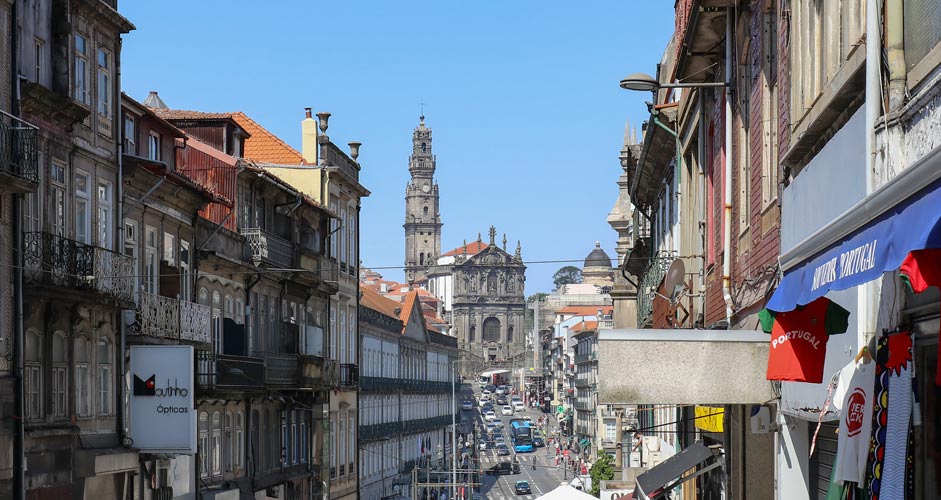
Porto is famous for its buildings decorated with blue and white azulejo tilework. Examples of such buildings include the following three churches: Igreja do Carmo, shown in the picture below; Igreja Paroquial de Santo Ildefonso at the southern end of the shopping street Rua de Santa Catarina; and Capela das Almas de Santa Catarina along the same shopping street next to the Bolhão metro station. The decorative hallway of the São Bento railway station in the center, is yet another beautiful example you should visit.
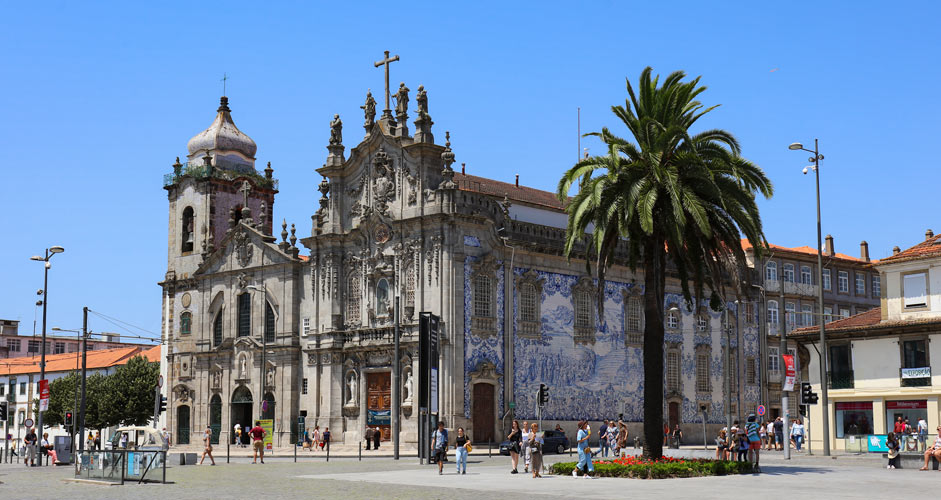
Vila Nova de Gaia and port wine
Vila Nova de Gaia, situated opposite to Porto on the other side of the Douro River, is the third largest city of Portugal. Gaia is known for its numerous port wine houses and the cozy promenade that begins right after the Luís I bridge. Thus, the promenade is just a few minutes away on foot from the Porto promenade. The whole area is shown in this picture.
Behind the promenade, there are plenty of wine houses that organize tastings and guided tours on port wine manufacturing. A guided tour can also consist of a recording, which you can listen to at your own pace while strolling around the cellars.
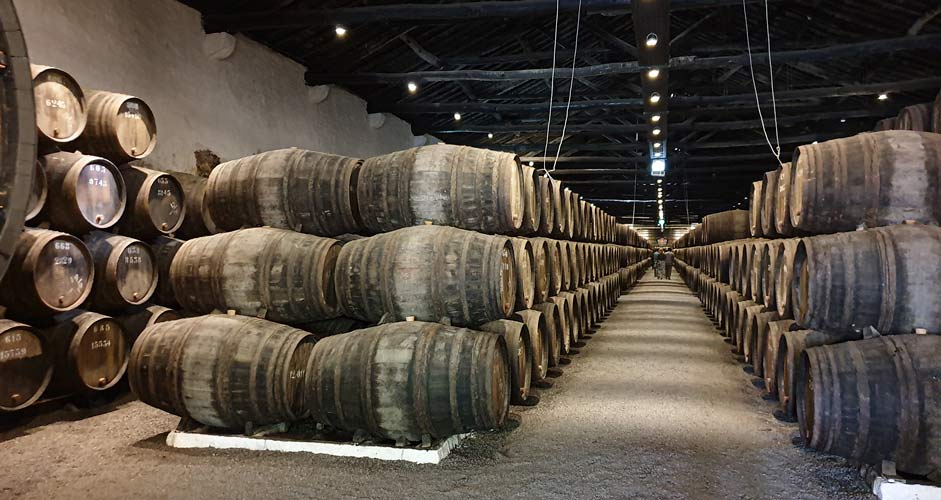
Strolling through the Vila Nova de Gaia promenade is worth your while, even if you’re not interested in port wines. The Vila Nova de Gaia promenade is wider and more quiet than the Porto Promenade, but largely aimed at tourists. There’s a small market hall at the end of the Vila Nova de Gaia promenade, and enough restaurant terraces to cover the whole stretch.
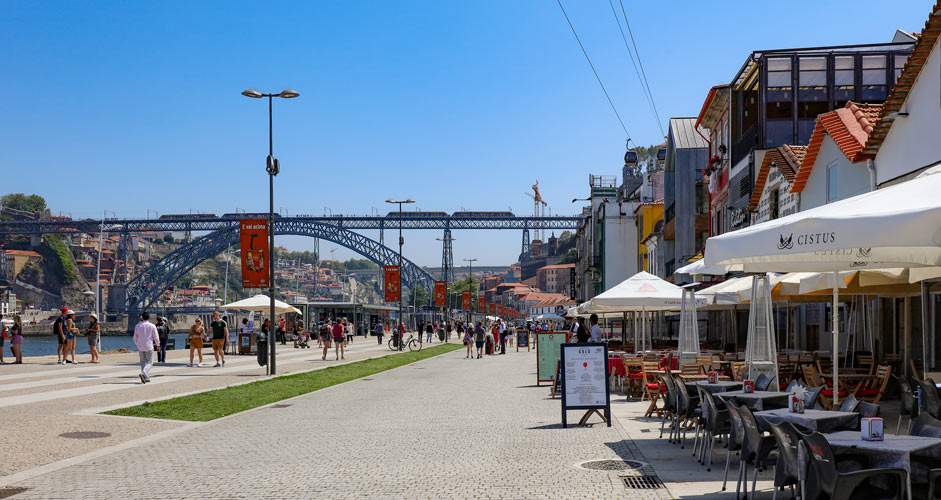
River cruises
There are various types of cruises on offer for the Douro River. They mostly head to Douro wine valley and last for the entire day, but shorter cruises also exist. The cruise ships vary from traditional boats (shown in the picture) to large jet boats with plenty of speed and a guarantee of getting wet.
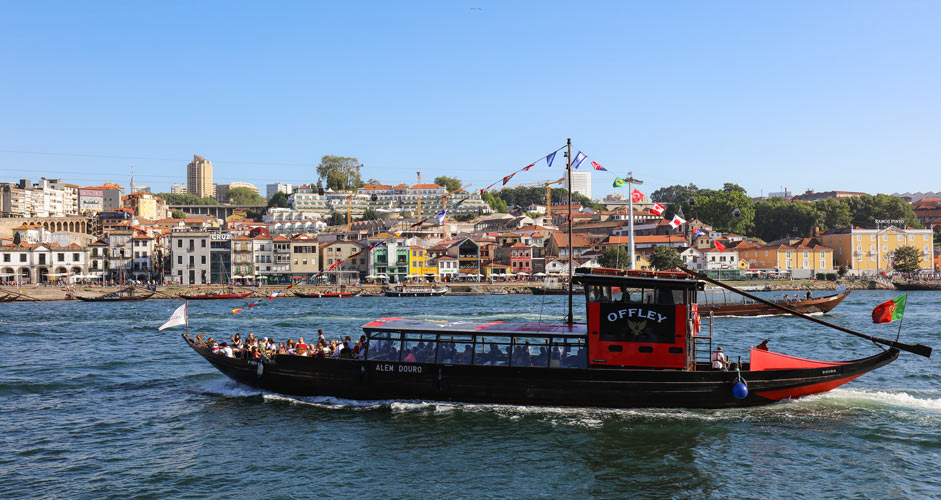
Douro Valley
Often, the river valley that begins just outside Porto gets more attention than Porto itself, and not for no reason. The view is just so beautiful with the Douro River zigzagging through the lush valley covered with grapevine. As the river tinkles in the shades of sea green and marine blue color, the view is nothing short of masterpiece on its own.

The Douro Valley is known as a wine region for growing grapes to manufacture port wine. The best-known local port wine houses, such as Taylor’s or the oldest wine maker of Portugal, Real Companhia Velha, have their own vineyards in the Douro Valley. The first phases of production are completed in these vineyards, before the wine is moved to Vila Nova de Gaia for aging and bottling.
It’s very easy to travel to the Douro Valley. Whether you travel by car, on a cruise or a helicopter, the great view is always included. The train track is certainly one of the most gorgeous ones in Europe. To see the river close by from the train, pick your seat on the right-hand side of the train (in the direction of travel) when traveling from Porto to the valley, and vice versa. In addition to train, car is another handy and quick method to travel to the valley.
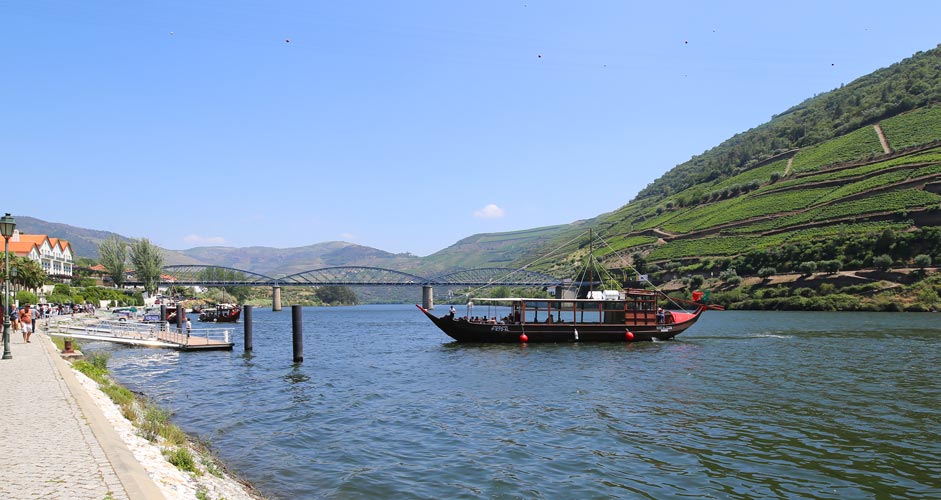
Best known villages along the Douro River are Régua and Pinhão, which both have a train connection from the São Bento station in Porto. Régua is the larger of the two and also the capital of the area. Pinhão is situated farther away, equivalent to about 20 minutes by train. Altogether, it takes about 2 hours and 15 minutes by train from Porto to Pinhão. Pinhão is a very popular wine tourist destination, and in addition to great views, there are two major vineyards to be discovered: Quinta das Carvalhas and Quinta la Foz. Both offer visits including port wine tasting.
When going on a day trip to the Douro Valley, remember that the weather there is often considerably warmer than on the coast. Do check the weather forecast in advance and dress accordingly.
Beaches in Porto
Foz do Douro
Porto is well known for its sandy beaches that unfold at the Douro River estuary and almost reach the neighboring town Matosinhos. At times, the beaches are somewhat rocky with seaweed around, and as such they are not ideal swimming.
On the other hand, the restaurant and bar services are good, and as such the beach district Foz do Douro is very well suited for having a meal and some drinks right by the sea. The area is also good for sunbathing, and why not for swimming as well, unless you’re looking for a top-notch beach.
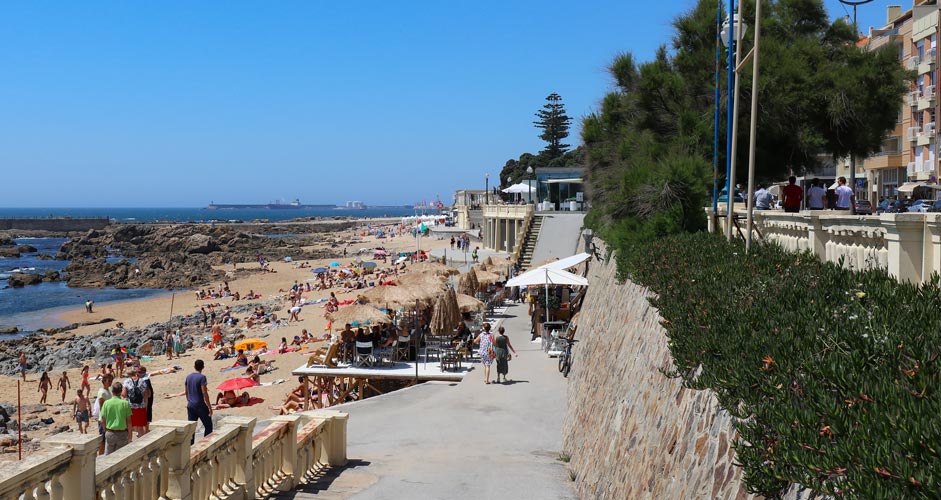
There’s no metro connection to Foz do Douro, and bus is the only public transport option. The line 500 operates along the coast all the way to Matosinhos. The distance from the Luís I bridge to the beaches is 6 kilometers.
Matosinhos
The beach destination of Matosinhos belongs to the northern Porto district, and it’s situated a 30-minute metro ride away from the center of Porto. The metro line A (blue) brings you to just a few hundred meters from the main beach, given that you stop at the Matosinhos Sul station.
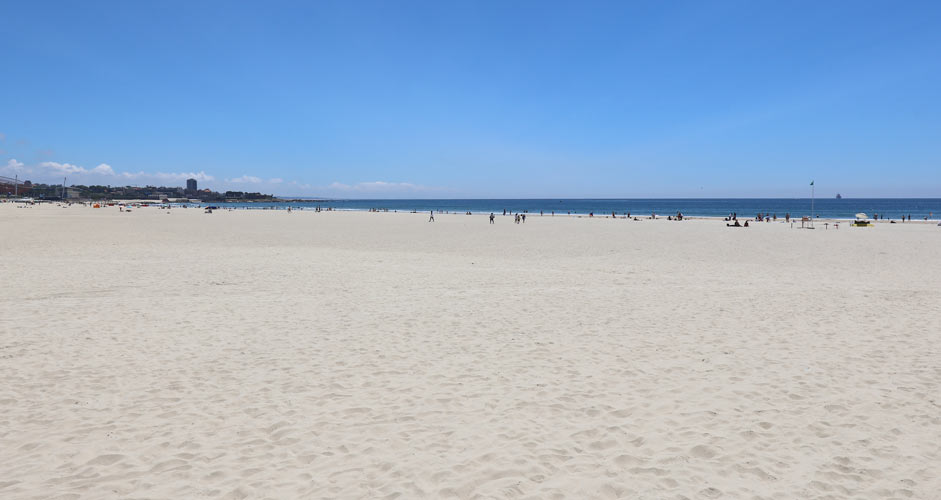
When planning a beach holiday, bear in mind that the Atlantic Ocean is cool around Northern Portugal, and the seawater temperature doesn’t exceed +20°C at any time in the summer.
Food
Porto is famous for Francesinha, "Little French girl" in Portuguese. It has nothing to do with an actual French girl, however. Instead it’s a toasted bread with steak, ham and sausages in between and molten cheese (often two sorts) on the top. To top it off, it comes with beer and tomato sauce, and possibly a fried egg. French fries are often served as a side dish.
Francesinhas are served regularly in restaurants, with the most popular ones located in the Bolhão district (in the center). There’s usually a line in front of Café Santiago during the daytime. Brasão Cervejaria Coliseu Baixa on the opposite side of the Passos Manuel street, is also an excellent choice - perhaps the best one. Lado B right next to these is a good back-up plan, if you fail to get a table in the aforementioned restaurants.
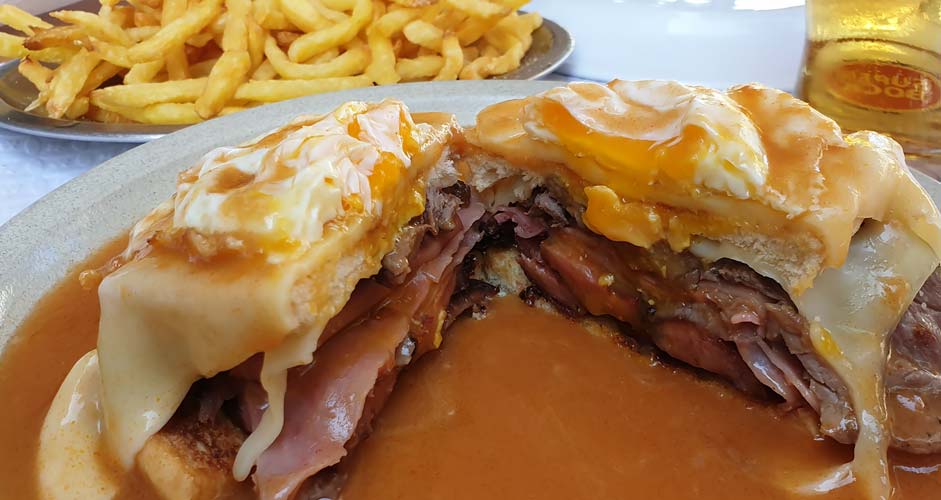
Another popular course all around Portugal is Bacalhau, dried and salted cod, which is sold also in all large supermarkets. The fish is desalinated, i.e. washed and soaked in cold water, before cooking. While there are myriads of Bacalhau dishes, these tend to appear repeatedly on menus:
Bacalhau à Brás (or à la Brás) = A dish with shredded cod, potato, onion and eggs mixed and cooked together (the name Brás comes from the possible inventor of the dish)
Bacalhau com natas = Cod (usually with potatoes and onions) baked in cream
Bolinhos de Bacalhau (or Pasteis de Bacalhau) = Deep-fried cod and potato croquettes
Bacalhau fresco is not a typical Bacalhau dish; instead it’s fresh cod as its name suggests.
If you want your dish grilled (usually on coal), look for the term ”na brasa” on the menu.
As for culinary experiences for fish enthusiasts, Porto is no match for the neighboring port town and beach destination Matosinhos, which has the best fish restaurants of the area.
Shopping
- The main shopping street is the promenade, Rua de Santa Catarina, in Bolhão district. Also the shopping center Via Catarina (link) is situated along the street.
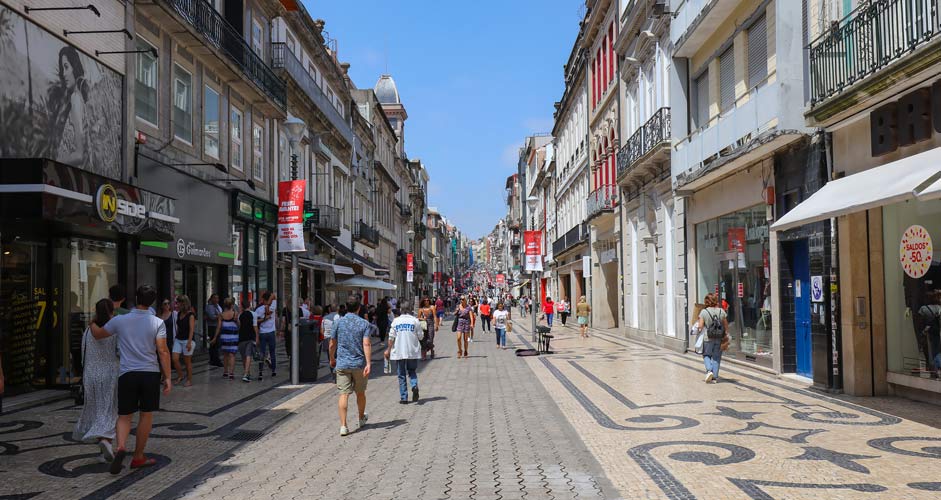
- The largest shopping center of Porto, NorteShopping (link), is situated a 15-minute metro travel away from the center. The closest station is Sete Bicas, a few hundred meters away on foot. All lines except for D operate via the station.
- Vila do Conde Fashion Outlet is situated behind the airport along the metro line B (link).
- The multi-story shopping center, El Corte Ingles, is situated on the Vila Nova de Gaia side of the river, right next to Joao de Deus metro station (yellow line D).
Price level
Compared to European prices, Porto is still an affordable destination, except for the accommodation costs that have risen significant during the past few years. Below, there are some price examples of hotels and restaurants that refer to median prices at Booking.com
Pizza in restaurant
Francesinha
33 cl beer in restaurant
Hotel, 3-4 stars (April)
Hotel, 3-4 stars (July)
€11-14
€10-14
€2-3
€108
€110
From the Porto airport to the center
The metro station of Francisco Sa Carneiro Airport is the first station on the line E (purple). The final station of the E-line is Trindade, and as such the line doesn’t reach all the way to the center of Porto. However, at Trindade, you can switch to any other line, if necessary.
It is quite simple to get to the center by metro, since there’s only one line and direction available. The map of the metro is shown on Wikipedia here.
The airport metro station is located on the opposite side of the arrival hall, just across the road. To get there, walk down the stairs, follow the underpass the other side of the road and then climb up the stairs. An elevator is also available. The ticket can be purchased from a ticket machine. The required zones can be checked from the list of stations indicated on the ticket machines.
Weather in Porto
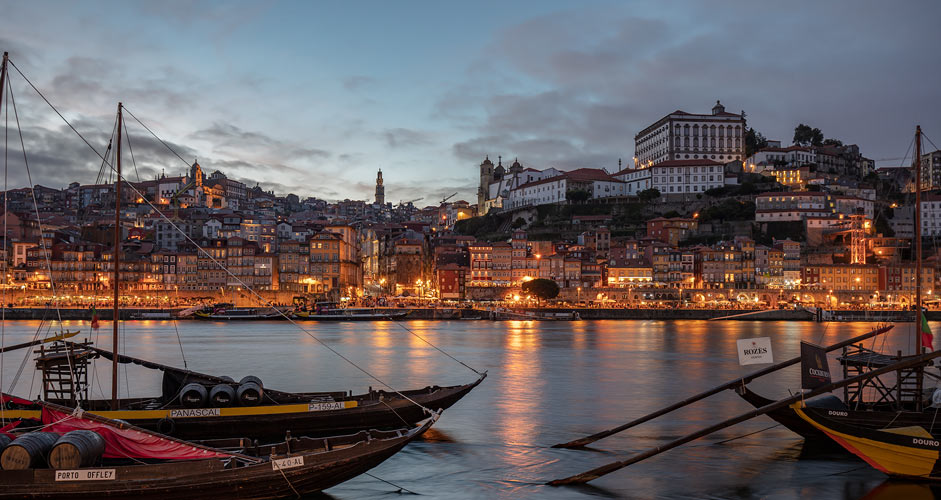
Winter: The winter weather in Porto is rainy, windy and mild. Daily high temperatures change on both sides of 15°C, and more than half of the days contain at least some form of rain. There are no sub-zero temperatures or snow.
Spring: Since summers aren’t hot nor winters cold, there are no dramatic changes in the springtime weather. In May, daily highs exceed 20°C more regularly but it still rains. Only the summers are dry.
Summer: Generally, Porto is a perfect summer destination. The cool Atlantic Ocean lowers the air temperature by 10 - 15 degrees compared to cities just 100 kilometers towards inland. Even in July, daily highs are often between 20-25°C and rise above 30°C only rarely – and even then, the Atlantic breeze cools off the city. Typically, it’s cloudy in the mornings, and it gets sunny in the afternoons and evenings. Precipitation is low in summer; it rains very rarely, especially between July and August.
Fall: It slowly begins to rain in September, and October is the rainiest month of the year. In September, temperatures are still warm, almost like in July, but quickly begin to drop in October. By the end of the month, daily highs may remain at 15°C, while nighttime temperatures may drop to below 10°C. In November, more than half of the days are rainy, and temperatures vary on both sides of 15°C.
---
Text and images: Jussi Ryynänen (Douro Valley: Ville Ryynänen)








